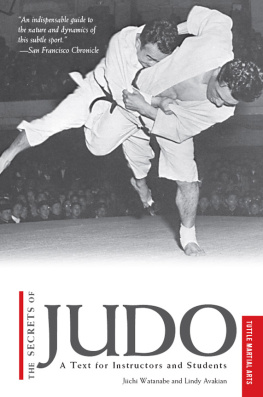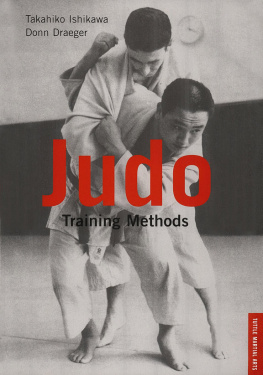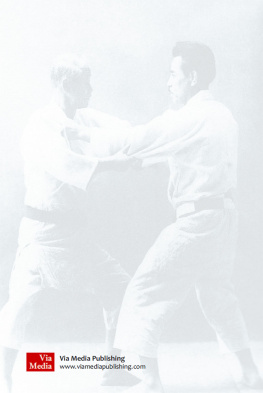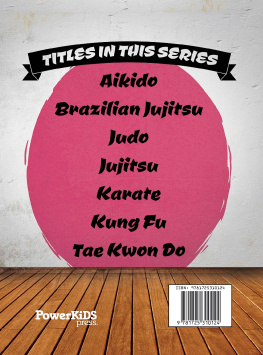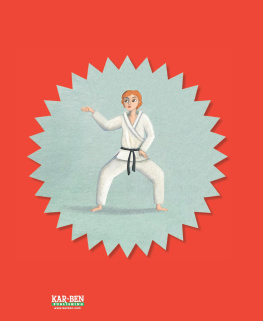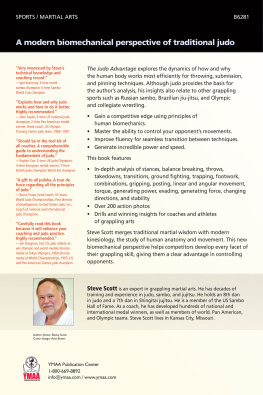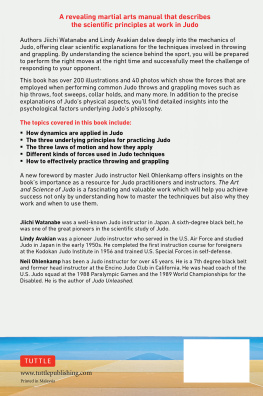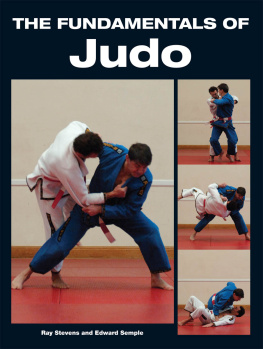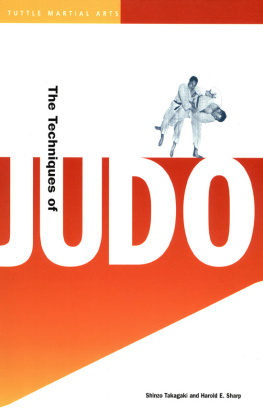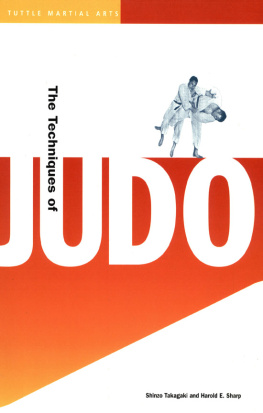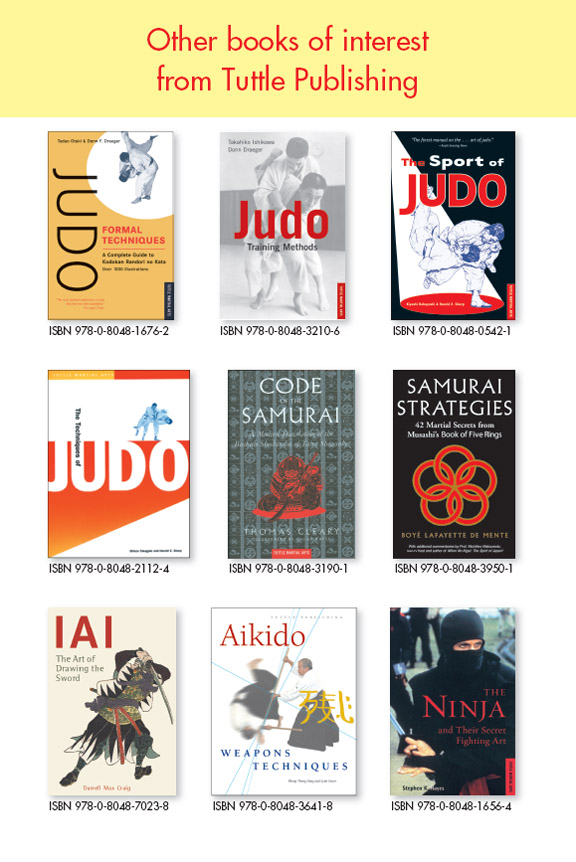1
The Art
and Science
of Judo
WITH THE rapid expansion of interest in judo throughout the world today, there has developed a need for a textbook on the art and science of this sport: a textbook to be used as a reference and guide for schools, instructors, students, and the general public. The terms jujitsu and judo are common to our knowledge, but the difference in their meaning is not too clear.
Judo is a derivative of jujitsu and is the correct term used to refer to that art in today's language. The word judo specifically explains the truer meaning of the art as it is practiced today. The ju part of the word means "gentleness" or "giving way" and implies a flexibility of techniques, while the do part means "way" and signifies the application of the ju principle in the execution of the techniques, not only in the physical exertions of the judoist but also in his mental attitude. The older jitsu , which was replaced by do , meant "technique" or "art."
When Dr. Jigoro Kano developed judo from its original martial art form, he wanted something more than skill in technique. He theorized that what was needed was a blend of the finer techniques of jujitsu with a form of mental training or philosophy as its driving force. Do or "the way" therefore came to signify the mental training that the judoist needs in order to make practical use of the judo philosophy in personal contacts, daily experiences, and career relations. In other words, judo teaches the maximum efficient use of mental and physical energy.
We can say that judo is an art because it is a method of arriving at self-realization and true self-expression. We can further say that judo is a science because it implies mastery of various laws of nature: gravity, friction, momentum, velocity, weight transmission, and unison of forces. In its most important phase, it constitutes a kind of higher logic developed through practice and the ascension of the true personality: a realization of the spiritual self in the philosophic rather than the religious sense of the word.
The study of judo without the realization of its secretsthat is, its metaphysical sideleaves one in partial mental emptiness. We must first realize that the study of true judo is symbolic of mental attitudes and behavior. The subconscious mind is where our behavior patterns are collected in a vast reservoir of our years of experience. When we are able to tap these resources we can build our personalities anew, developing positive attitudes and, in the end, mastering the purely physical. It has been said, in regard to a judo expert's level of mental development, that "the arms are an extension of the mind." Training in judo disciplines the mind through physical-symbolic exercises, bringing about a maturity of the skill of higher logic. It is the use of this skill that characterizes the mental reaction of the judoist to a given situation when it arises.
At the beginning of his training, as the judoist learns the techniques of falling, mental conditioning takes over almost simultaneously with the development of physical skill. Mental control becomes an accepted reaction by the subconscious. Then, once mastery of the techniques of falling is acquired, the judoist progresses to the acquisition of skill in the techniques of throwing and, from this, to a knowledge of the principles that govern throwing and the control of balance in his body.
The beginning judoist should realize that it is better to learn the basic techniques and principles well than to oversaturate the mind with hundreds of subsidiary techniques that cannot possibly be mastered in one lifetime. In other words, it is better for the student of judo to perfect himself in the basic techniques and principles in order to set an impression on his subconscious mind. This is the result most to be desired. Once these symbolic exercises have been impressed upon the mind, the new, positive, expert attitude to situations begins to develop. Two good judo maxims illustrate the purpose of such training: Seiryoku zenyo means "the maximum efficient use of physical and mental energy" and jita kyoei , "mutual welfare and benefit."
The true value of any art formwhether it be music, painting, flower arrangement, sculpture, or judois that it has the goal of discovering and developing the true potential within the artist. Combative arts are patterned to challenge the expert to the development of speed, physical superiority, and mental alertness, but in judo the mental aspect is the ultimate goal of all effort, both for novices and experts. The judoist has no time to allow himself a margin for error, especially in a situation upon which his or another person's very life depends. The secret of judo is serenity of mind. The judoist must react with a conditioned reflex to any situation. It must be an automatic response, since there is no time for thinking the situation through. It must, in fact, be a state of mind such that even an attack by an opponent of greater size, or the development of a challenging situation, does not cause the judoist to change his center of balanced defense against the challenge.
This serenity of mind is developed in proper judo practice, but the true reservoir of mental composure is built through Zen meditation. Zen is a relative form of yoga, without the difficult gymnastic feats. Through correct breathing and proper postural discipline, one creates a mental state of reserved energy. Throughout the meditation period, the Zen student concentrates on "nothingness" and accepts no opposing force of any kind. He seats himself in a kneeling-sitting position in a state of relaxation as nearly complete as possible. There seems, however, to be no serious reason for the Western judoist to adopt this practice, since the Zen effect is embodied in the exercises of judo itself: exercises that require the student to re-enact the Zen performance in its adaptation to practical techniques. During free exercise, which is similar to sparring in boxing, one learns to give way "softly" to the quick movements of an opponent. These exercises also serve to train the student in adaptation to continual change. They are called kata , and their purpose is to teach the principles of judo.
Self-defense in judo is only one basic aspect of this art. The nucleus must be mental control, in order that mastery of the self-defense techniques may be achieved. It is important for us to realize that even though Zen originated in a religious environment, it is a philosophy and can be applied to any of our personal beliefs.
The average person, even though he does not attain ultimate mastery of true judo, can find much enjoyment in practicing its basic phases, whether he practices them as physical or mental culture, as a sport, or as a means of training in self-defense through acquiring knowledge of how to strike an opponent's vital points. In any event, such judo practice will give him a healthier body and mind, a graceful control of body balance, and increased alertness. Judo can be practiced by both men and women, boys and girls. The guidance of an instructor is very important. The relative intensity of practice can be regulated to fit the individual's needs and tolerances. Judo is a natural art. It is neither mystical nor dangerous. On the contrary, it has great value for any person, no matter what his field of endeavor may be. Few art forms can give the individual what judo has to offer.
To further understand true judo, we must go back to the origin and the ancient practice of the art in its earliest form. Every country has given the world some form of combative art between individuals. In Japan these martial arts were the sole property of the samurai class during the feudal period. Jujitsu, fencing, archery, and combat with lances were the most prominent among these. But time brought about the adoption of more modern weapons, and the martial arts took a back seat while guns, cannons, and the like occupied the foreground. By the end of the Tokugawa period (1615-1867) the martial arts had become systematized and had produced many schools with many eminent masters who developed their own styles and techniques. It was Dr. Jigoro Kano who combined the principles of the martial arts with techniques that he himself had developed and with a mental science program, thereby producing a newer art form called judo.

